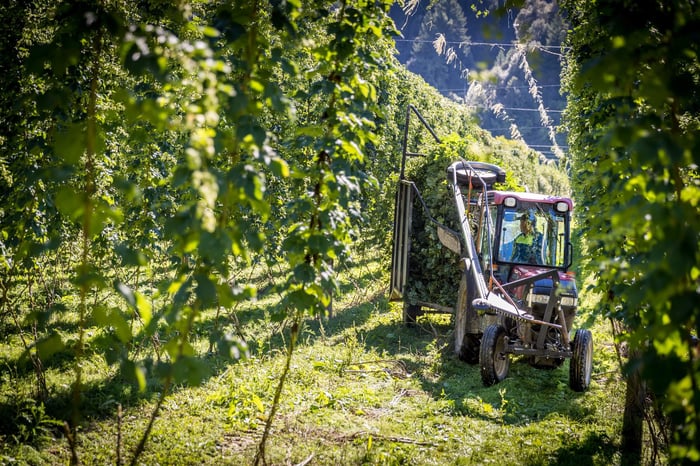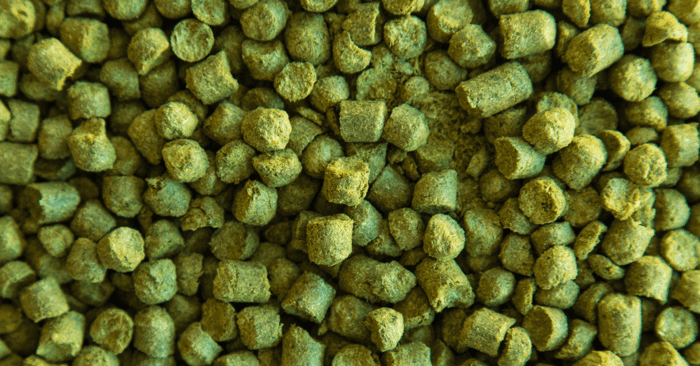What happens when traditional European brewing meets innovative New Zealand agriculture? Pure hop magic, that's what. These remarkable varieties from the antipodes have quietly revolutionised brewing across Europe, offering flavour profiles that complement our noble hop traditions whilst bringing something entirely fresh to the table.
A Tale of European Roots and Kiwi Innovation
The story begins with our ancestors. When European settlers – particularly from Southern England and Germany – ventured to New Zealand in the early 19th century, they carried with them precious hop rhizomes. Varieties like Fuggle, Golding, and Spalt made the long journey across the seas, establishing the foundation of what would become one of the world's most distinctive hop-growing regions.
These traditional varieties served their purpose well, providing the backbone for early New Zealand brewing. However, the Great War brought unexpected challenges and opportunities in equal measure.
Crisis Breeds Innovation: The Cluster Revolution
With European imports severely restricted during World War One, New Zealand growers faced a critical decision. The solution came from across the Pacific – California's 'Cluster' variety offered the economic viability they desperately needed. This hop variety spread rapidly across New Zealand's growing regions, becoming the dominant choice for new plantings throughout the war period.
Yet success bred complacency, and monoculture proved perilous. By 1940, black root rot (Phytophthora cactorum) had devastated the Cluster-dependent industry. Entire harvests vanished, leaving growers facing potential ruin.
From Disaster to Triumph: The Birth of Modern New Zealand Hops
Rather than surrender to adversity, New Zealand's hop breeders demonstrated remarkable ingenuity. They returned to those original European varieties – particularly the resilient Fuggle – and began an ambitious crossbreeding programme. By combining the disease resistance of traditional varieties with the vigour of newer stock, they created three groundbreaking cultivars: First Choice, Smooth Cone, and Calicross.
These weren't merely disease-resistant varieties; they were purpose-bred for multiple characteristics including yield optimisation, alpha acid potential, harvest timing, and mechanical harvesting compatibility.
The Nelson Terroir: Where Geography Meets Excellence
Today's New Zealand hop industry centres on the Nelson region of the South Island, where unique geographical conditions create what can only be described as hop terroir. The region's temperate maritime climate, coupled with distinctive soil composition and proximity to the Tasman Sea, imparts characteristics to hops that remain unmatched anywhere else globally.
The sight of wild hops growing along roadsides from Murchison to Motueka speaks to how perfectly this region suits hop cultivation. Like the great wine regions of Europe, Nelson's terroir produces hops with unmistakable regional character.
Understanding the Growing Conditions
New Zealand's hop-growing success stems from optimal environmental conditions. Hops require 15 hours of daily sunlight, 120 frost-free days during the growing season, and six to eight weeks below 10°C during dormancy. New Zealand's latitude of 41-42° South places it squarely within the ideal hop-growing belt of 30° to 52°.
Essential Guide to New Zealand Hop Varieties
Each variety tells its own story, offering European brewers unprecedented flavour possibilities. From the wine-like characteristics of Nelson Sauvin to the tropical intensity of Riwaka, these hops have found their way into some of Europe's most celebrated craft breweries.
Complete New Zealand Hop Variety Guide:
| Variety | Flavour and Aroma | Organic | Alpha Acid |
|---|---|---|---|
| Motueka™ | Intense fresh lime followed by a background of tropical fruit and lemon zest | X | 6.5-7.5% |
| Pacifica™ | A fine aroma hop with its own signature citrus "orange zest" marmalade character | 5.0-6.0% | |
| Riwaka™ | A unique aroma hop with a powerfully fuelled tropical "passion fruit" character | 4.5-6.5% | |
| Wakatu™ | A really fine dual purpose hop with a heady mix of floral and citrus characteristics | X | 6.5-8.5% |
| Nelson Sauvin™ | Nelson Sauvin has the unique ability to impart a distinctive cool climate white wine "fruitiness" | X | 12-13% |
| Green Bullet™ | A dual purpose / bittering hop with a spicy "dried fruit" character and solid finish | 11-14% | |
| Pacific Gem™ | Described as producing oaken flavours with a distinct blackberry aroma | X | 13-15% |
| NZ Pacific Jade™ | A soft bittering / dual purpose hop with fresh citrus and complex spice characters | 12-14% | |
| Dr Rudi | A dual purpose / bittering hop with classic resinous pine and lifted citrus characters | 10-12% | |
| NZ Southern Cross™ | A dual purpose / soft bittering hop with a citrus "lemon zest" character with hints of pine | 11-14% | |
| Kohatu™ | A dual purpose hop with fresh tropical fruit characters and excellent finish and bitterness | 6.0-7.0% | |
| Rakau™ | A true dual purpose hops with stone fruit and fig characters and excellent bittering qualities | X | 10.0-11.0% |
| Sticklebract | An heirloom alpha hop that delivers solid bitterness matched to pine and citrus aroma | 12.30% | |
| Wai-iti™ | A fine aroma hop with fresh peaches and apricot character | X | 2.5-3.5% |
| Waimea™ | A big alpha hop that carries an even bigger weight of oils with lots of pine and citrus | 16-19% | |
| Taiheke™ | Dual purpose US Cultivar with citrus "grapefruit/lime | X | 6-8% |
| Chinook | Dual purpose US cultivar with pine "grapefruit/spice | 12.1-12.2% | |
| Fuggle | UK aroma cultivar with mild fruit "herbal/woody | 6.10% | |
| Golding | UK aroma hop with mild, delicate and sweet floral characteristics | 4-4.2% | |
| Liberty | US aroma cultivar with mild and spicy, subtle lemon and citrus characteristics | 5.90% | |
| Styrian Golding | European aroma hop with very mild, noble and spicy hop flavours | 5.1-6.1% | |
| Willamette | US aroma cultivar with mild and pleasant, slightly spicy floral tones | 6-7.6% | |
| Wye Challenger | Dual purpose hop with balanced bittering. Spicy, clean citrusy aroma with distinct herbal notes | 8.90% | |
| Moutere™ | high alpha hop with distinctive tropical, grapefruit and passion fruit characters | 17.5-19.5% |
Brewing Applications for European Palates
These varieties offer European brewers exciting opportunities to complement traditional noble hop character whilst exploring entirely new flavour territories. Consider how Nelson Sauvin might enhance a Belgian saison, or how Motueka could transform a traditional English bitter into something extraordinary.
Many successful European craft breweries have embraced these varieties as signature ingredients, creating modern classics that honour tradition whilst embracing innovation. The key lies in understanding how these bold flavours can work alongside, rather than overwhelm, the beer styles we know and love.
Seasonal Considerations for European Brewers
Harvest timing means New Zealand hops arrive fresh during our spring brewing season, offering European brewers access to peak-quality ingredients precisely when we're planning our summer and autumn brewing schedules. This timing advantage has made New Zealand varieties particularly popular for harvest ales and seasonal specialities.
Grainfather Team










